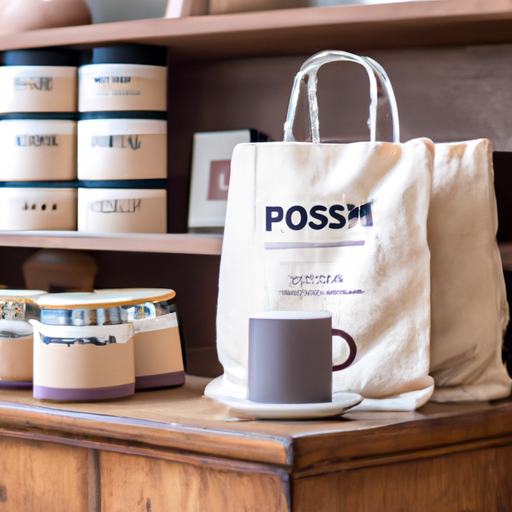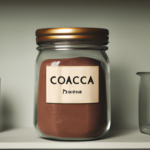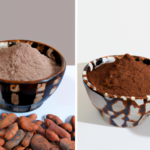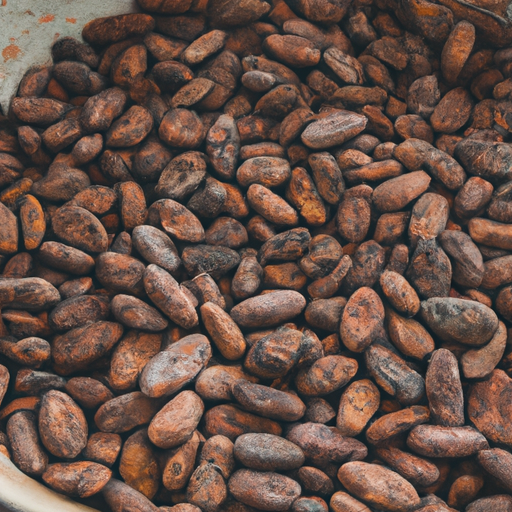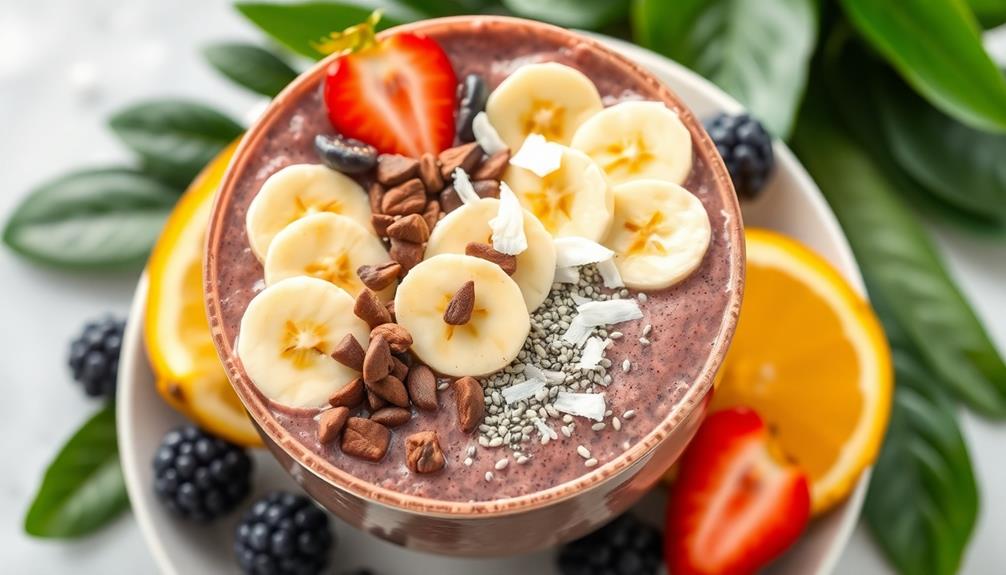Have you ever thought about how long your fermented raw organic cacao powder stays fresh? Well, I’m here to provide some insight into the shelf life of this tasty and nutritious product.
As a chocolate lover myself, I understand the importance of having fresh cacao powder at hand for all my baking and cooking needs. In this article, we will dive deep into the science behind determining the freshness of fermented raw organic cacao powder, as well as explore ways to extend its shelf life.
We will also discuss how to avoid contamination and spoilage, and the nutritional impact of the shelf life. Additionally, I will provide some tips on using expired cacao powder and incorporating it into your diet.
So, get ready to unlock the secrets of cacao powder shelf life and enjoy the benefits of this delightful ingredient.
Key Takeaways
- Freshness and shelf life are important factors for preserving the nutrient content and quality of fermented raw organic cacao powder.
- Proper storage guidelines include storing the cacao powder in a cool, dry place, using an airtight container, and avoiding exposure to sunlight, moisture, and odors.
- Creative uses of cacao powder include mixing it into coffee or hot chocolate, sprinkling it on desserts, blending it into smoothies or protein shakes, and incorporating it into baked goods like cookies or cakes.
- Using expired cacao powder can result in loss of flavor and nutritional value, as well as potential risks of foodborne illnesses from harmful bacteria and molds. Checking the expiration date and proper storage are crucial for safety and maximum enjoyment of the cacao powder.
Understanding Shelf Life for Fermented Raw Organic Cacao Powder
So, you’re probably wondering how long your fermented raw organic cacao powder will stay fresh, right? Well, determining the shelf life of this product is essential for preserving its freshness.
The shelf life of fermented raw organic cacao powder can vary depending on storage conditions and quality. Generally, when properly stored in a cool, dark, and dry place, it can maintain its freshness for about 2-3 years. However, it is important to note that this is just an estimate and the quality may deteriorate over time.
To determine the freshness of fermented raw organic cacao powder, you can perform a sensory evaluation by checking for any off-flavors or odors. Additionally, inspecting the color and texture can also provide insights into its freshness.
Now, let’s move on to understanding the factors that influence the shelf life of this product.
Determining the Freshness of Fermented Raw Organic Cacao Powder
When determining the freshness of fermented raw organic cacao powder, there are several visual and sensory indicators that can be observed. These include looking for any signs of mold or discoloration, as well as assessing the overall appearance and texture of the powder.
Additionally, conducting a smell and taste test can provide further insight into the quality and freshness of the cacao powder. By carefully examining these factors, one can ensure that the fermented raw organic cacao powder is still fresh and suitable for consumption.
Visual and sensory indicators
Discover the amazing visual and sensory cues that can help you determine the shelf life of fermented raw organic cacao powder! When examining the visual indicators, look for any signs of discoloration, such as the powder turning a dull brown or developing white spots. These can be indications that the cacao powder has begun to degrade and is no longer fresh. Additionally, pay attention to any clumping or moisture present in the powder, as these can be signs of moisture absorption and potential mold growth. On the sensory side, take note of the aroma and texture of the powder. A stale or off-putting smell, along with a gritty or clumpy texture, may suggest that the cacao powder is past its prime. By relying on these visual and sensory cues, you can confidently assess the freshness of your fermented raw organic cacao powder. Now, let’s move on to the next section and explore the smell and taste test.
Smell and taste test
Let’s dive into the smell and taste test, where you can rely on your senses to determine the quality of your cacao powder. Did you know that studies have shown that our sense of smell is responsible for 80% of what we taste? Here are three key indicators to consider during the smell and taste test:
-
Aroma: Take a deep breath and inhale the rich, chocolatey scent. A high-quality fermented raw organic cacao powder should have a strong and pleasant aroma, reminiscent of dark chocolate.
-
Flavor: Place a small amount of the powder on your tongue and let it dissolve. Notice the complex flavor profile that includes notes of bitterness, fruitiness, and earthiness. The taste should be intense and well-balanced.
-
Aftertaste: Pay attention to the lingering taste after swallowing. A good cacao powder will leave a satisfying, slightly bitter aftertaste that is not overpowering.
By conducting a thorough smell and taste test, you can ensure the freshness and quality of your cacao powder.
Moving on to checking for mold or discoloration, it is important to examine the powder closely for any signs of spoilage.
Checking for mold or discoloration
Now, it’s time to take a close look at your cacao powder. Checking for any signs of mold or discoloration is crucial in maintaining the quality and shelf life of fermented raw organic cacao powder.
Start by examining the powder for any visible mold growth. Look for fuzzy or powdery patches that appear different from the rest of the powder.
Additionally, check for any unusual discoloration, such as dark spots or changes in color. These could be signs of spoilage.
To prevent mold growth and extend the shelf life of your cacao powder, store it in a cool, dry place away from sunlight and moisture. Ensure the container is tightly sealed to prevent air exposure.
Taking these precautions will help preserve the freshness and quality of your cacao powder.
In the next section, we will explore ways to extend its shelf life without compromising its integrity.
Extending the Shelf Life of Fermented Raw Organic Cacao Powder
To ensure your fermented raw organic cacao powder stays fresh for longer, you’ll want to know some simple tips to extend its shelf life.
First and foremost, it is crucial to store the powder in an airtight container to prevent exposure to moisture and air. This will help preserve its freshness and prevent the growth of mold or bacteria.
Additionally, keeping the powder in a cool, dark place, such as a pantry or cupboard, will further enhance its longevity. It is important to avoid storing it near heat sources or in direct sunlight, as this can accelerate the degradation process.
By following these guidelines, you can extend the shelf life of your fermented raw organic cacao powder, ensuring its quality and flavor over time.
Now, let’s delve into the next section about avoiding contamination and spoilage.
Avoiding Contamination and Spoilage
To extend the shelf life of fermented raw organic cacao powder, it is crucial to take measures to avoid contamination and spoilage. Cross contamination can occur when the cacao powder comes into contact with moisture, heat, or other substances that may introduce bacteria or mold.
To prevent this, it is important to store the cacao powder in a cool, dry place, away from direct sunlight and heat sources. Additionally, it is recommended to keep the cacao powder in an airtight container to minimize exposure to air and moisture.
Proper storage techniques will help maintain the quality and freshness of the cacao powder for a longer period of time. By understanding the nutritional impact of shelf life, we can further appreciate the importance of preserving the integrity of fermented raw organic cacao powder.
Understanding the Nutritional Impact of Shelf Life
When it comes to understanding the nutritional impact of shelf life, it is important to consider how the length of time a product is stored can affect its nutrient content.
In the case of fermented raw organic cacao powder, for example, the longer it sits on the shelf, the more likely it is to lose some of its beneficial compounds. This is why consuming fresh cacao powder is crucial in order to maximize its nutritional benefits.
However, it is also necessary to strike a balance between freshness and convenience, as finding ways to preserve the cacao powder while still maintaining its nutrient content is equally important.
How shelf life affects nutrient content
Did you know that the longer the shelf life of fermented raw organic cacao powder, the more it can potentially affect its nutrient content?
The impact of storage conditions on the nutritional degradation over time is a crucial factor to consider. Exposure to light, heat, and oxygen can lead to the breakdown of certain nutrients present in cacao powder.
For example, antioxidants, which are beneficial for our health, can be particularly sensitive to these storage conditions. Over time, the antioxidant content in cacao powder may decrease, reducing its potential health benefits.
That’s why it is important to consume fresh cacao powder to maximize its nutritional value. By doing so, you can ensure that you are getting the most out of this superfood and its potential health benefits.
Importance of consuming fresh cacao powder
When it comes to cacao powder, freshness is key to preserving its nutrient content and overall quality. The shelf life of a product can greatly affect its nutritional value, so consuming fresh cacao powder is of utmost importance. But how can we determine if a cacao powder is fresh?
Look for freshness indicators such as a strong, rich aroma and vibrant color. Fresh cacao powder should have a smooth texture and be free from any clumps or lumps. It should also be stored in a cool, dry place to maintain its freshness for as long as possible.
By consuming fresh cacao powder, you can ensure that you are getting the maximum benefits from this superfood. Now, let’s explore how we can balance freshness and convenience when it comes to cacao powder.
Balancing freshness and convenience
To maintain the optimal quality of your cacao powder while still enjoying the convenience of its use, you can find a balance between freshness and practicality.
Balancing convenience and preserving freshness is important to ensure you get the most out of your fermented raw organic cacao powder. One way to achieve this is by storing the powder in an airtight container in a cool, dark place, away from moisture and direct sunlight. This will help to extend its shelf life and preserve its rich flavor and nutritional benefits.
Additionally, using the powder within its recommended expiration date is crucial to maintain its freshness. By following these guidelines, you can enjoy the convenience of using cacao powder while still reaping its full potential.
Now, let’s explore some tips for using expired cacao powder.
Tips for Using Expired Cacao Powder
Although expired cacao powder may not taste as fresh, it can still be used in baking to add a subtle hint of chocolate flavor. Don’t throw away that expired cacao powder just yet! Here are some creative ways to repurpose it and make the most out of its flavor:
- Mix it into your morning coffee or hot chocolate for an extra boost of chocolatey goodness.
- Sprinkle it on top of desserts like ice cream or yogurt for a rich and indulgent touch.
- Use it as a dusting on cookies or cakes to add a touch of cocoa flavor.
- Blend it into smoothies or protein shakes for a nutritious twist.
By incorporating expired cacao powder into various recipes, you can still enjoy its unique taste and reap its benefits.
Now let’s explore the benefits of incorporating fermented raw organic cacao powder into your diet.
Incorporating Fermented Raw Organic Cacao Powder into Your Diet
Indulge in the rich flavor and numerous health benefits of incorporating fermented raw organic cacao powder into your diet. This unique ingredient can add a delightful twist to your desserts and provide a boost of antioxidants and minerals.
When using cacao powder in desserts, you can mix it into brownie or cookie batter for a decadent chocolatey taste. It can also be sprinkled on top of ice cream or yogurt for an extra dash of flavor. Additionally, cacao powder can be blended into smoothies and beverages, giving them a rich and velvety texture. Add a spoonful to your morning smoothie or mix it with warm milk for a cozy hot chocolate.
These creative ways to use cacao powder will surely satisfy your chocolate cravings while providing you with its numerous health benefits.
Transitioning into the subsequent section about ‘frequently asked questions about cacao powder shelf life’, let’s explore how long this incredible ingredient can last.
Frequently Asked Questions about Cacao Powder Shelf Life
When it comes to cacao powder, one of the common questions is whether it expires. The answer is yes, cacao powder does have a shelf life.
Expired cacao powder can potentially make you sick if consumed, as it can develop mold or bacteria over time.
To properly store cacao powder and extend its shelf life, it is recommended to keep it in a cool, dark, and dry place, preferably in an airtight container.
Does cacao powder expire?
Cacao powder does not expire, as long as it is stored properly. To determine the ideal storage conditions, it is important to consider factors such as temperature, humidity, and exposure to light. Here are five key points to keep in mind:
- Store cacao powder in an airtight container to prevent moisture absorption and maintain its quality.
- Keep it in a cool, dark place away from direct sunlight, as exposure to heat and light can degrade the powder.
- Avoid storing it near strong-smelling foods, as cacao powder can absorb odors easily.
- Check for any signs of moisture, clumping, or a rancid smell, as these indicate the powder may have gone bad.
- While expired cacao powder is unlikely to make you sick, it may lose its flavor and nutritional value over time.
Now, let’s explore whether expired cacao powder can have any adverse effects on your health.
Can expired cacao powder make you sick?
Consuming expired cacao powder can potentially lead to foodborne illnesses, such as stomach cramps and diarrhea, as shown in a reported case of a person who unknowingly consumed expired cacao powder in their homemade chocolate brownies.
When cacao powder reaches its expiration date, it may harbor harmful bacteria and molds, which can pose health risks if ingested. The presence of these contaminants in expired cacao powder can cause gastrointestinal discomfort and other symptoms associated with food poisoning.
Therefore, it is crucial to ensure the safety of cacao powder by checking its expiration date before use. Additionally, proper storage is essential to maintain the freshness and quality of cacao powder. By keeping it in a cool, dry place, away from direct sunlight and moisture, you can extend its shelf life and reduce the risk of consuming expired cacao powder.
How to properly store cacao powder
Expired cacao powder can indeed make you sick, as it may harbor harmful bacteria or develop mold. So, it is crucial to ensure that your cacao powder is properly stored to preserve its freshness and extend its shelf life. Proper storage involves keeping it in a cool, dry place away from direct sunlight and moisture. It is best to store it in an airtight container to prevent exposure to air, which can cause oxidation and degradation of its quality. To illustrate the importance of proper storage, let’s take a look at the table below:
| Improper Storage Conditions | Proper Storage Conditions |
|---|---|
| Exposure to sunlight | Cool, dark place |
| Moisture | Dry environment |
| Open container | Airtight container |
| High temperature | Cool temperature |
| Air exposure | Minimal air exposure |
By following these guidelines, you can ensure that your cacao powder remains fresh and safe for consumption. Transitioning into the subsequent section, let’s now explore how to enjoy the benefits of fermented raw organic cacao powder.
Conclusion: Enjoying the Benefits of Fermented Raw Organic Cacao Powder
Indulging in the benefits of fermented raw organic cacao powder is all about savoring its rich flavors and nourishing your body with its wholesome goodness. To fully enjoy these benefits, it is important to maximize the freshness of the cacao powder.
Proper storage is key in ensuring that the powder retains its quality for as long as possible. Store the cacao powder in a cool, dark place, away from direct sunlight, heat, and moisture. It is also recommended to transfer it to an airtight container to prevent any exposure to air, which can cause oxidation and degrade the quality of the powder.
By following these storage guidelines, you can continue to relish the delightful taste and reap the nutritional rewards of fermented raw organic cacao powder for an extended period of time.
Frequently Asked Questions
Can I still consume fermented raw organic cacao powder after its expiration date?
No, it is not recommended to consume fermented raw organic cacao powder after its expiration date. To maximize freshness, store it properly in a cool, dry place away from sunlight and strong odors.
What are the signs that fermented raw organic cacao powder has gone bad?
Signs of spoilage in fermented raw organic cacao powder include a rancid smell, off taste, and a change in color or texture. Proper storage techniques, such as keeping it in a cool, dry place, can help prolong its shelf life.
How long does fermented raw organic cacao powder typically last if stored properly?
Fermented raw organic cacao powder typically lasts 2-3 years when stored properly. Proper storage involves keeping it in an airtight container, away from heat, moisture, and sunlight. Factors like humidity and temperature can affect its shelf life.
Can I freeze fermented raw organic cacao powder to extend its shelf life?
Yes, freezing fermented raw organic cacao powder is an effective way to extend its shelf life. By storing it in an airtight container, you can preserve its quality for up to a year.
Are there any health risks associated with consuming expired fermented raw organic cacao powder?
There may be health risks associated with consuming expired fermented raw organic cacao powder. It is important to check for signs of spoilage and adhere to the recommended dosage to maximize the health benefits.
Does Adding Raw Cacao Powder to Smoothies Affect Its Shelf Life?
Adding raw cacao powder to your smoothie recipe can slightly affect its shelf life. The antioxidants in raw cacao powder may help to preserve the smoothie for a little longer, but it’s best to consume it within a day or two for the freshest taste and maximum benefits.
Conclusion
In conclusion, understanding the shelf life of fermented raw organic cacao powder is essential for maintaining its freshness and nutritional value. By properly storing the powder and avoiding contamination, you can extend its shelf life and enjoy its benefits for longer.
Using expired cacao powder may not be ideal, but it can still be used in certain ways. Incorporating this superfood into your diet can provide numerous health benefits.
So, make the most of this delicious and nutritious ingredient and indulge in the wonders of fermented raw organic cacao powder!


